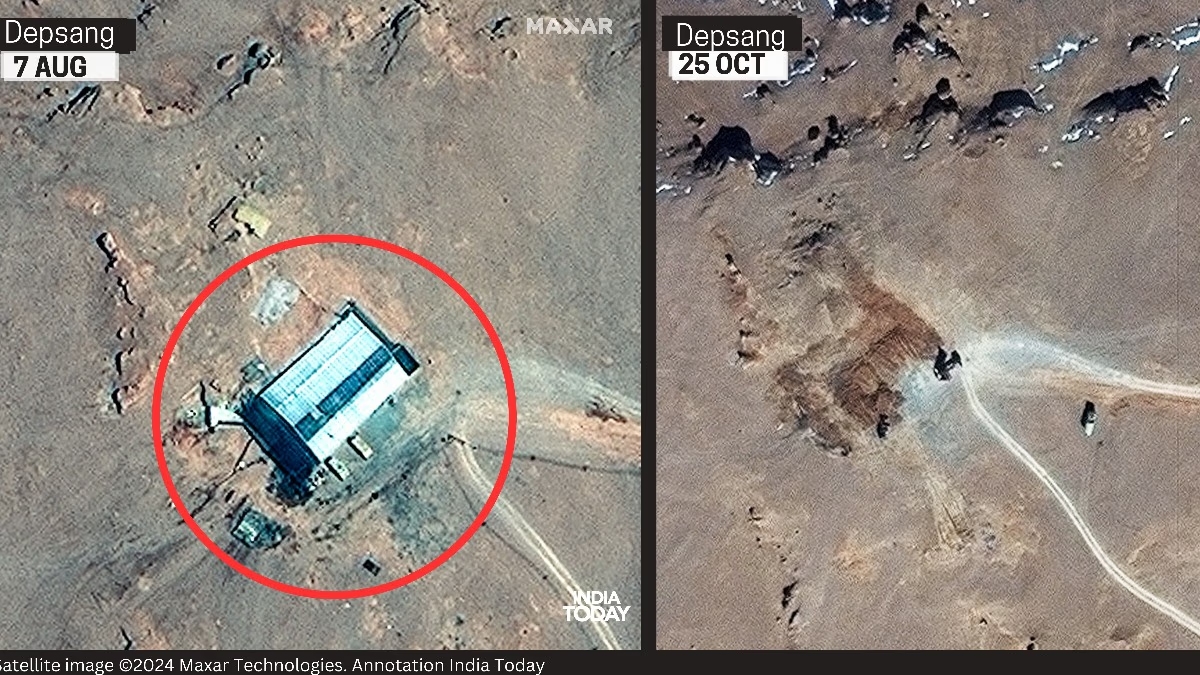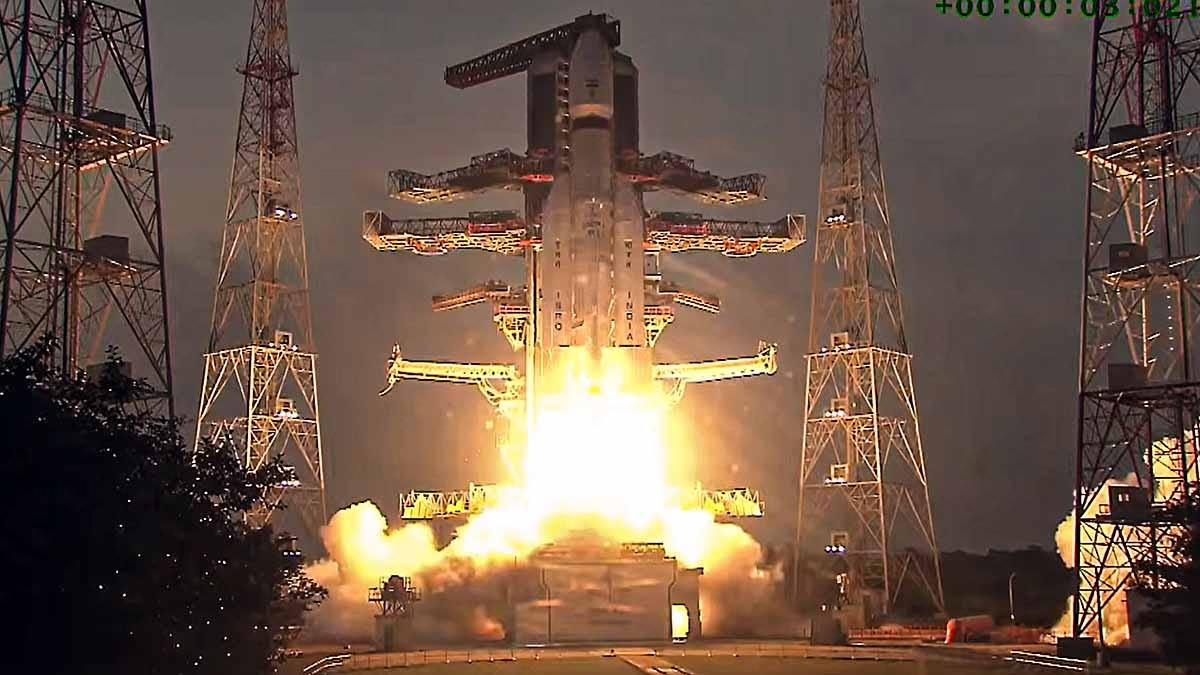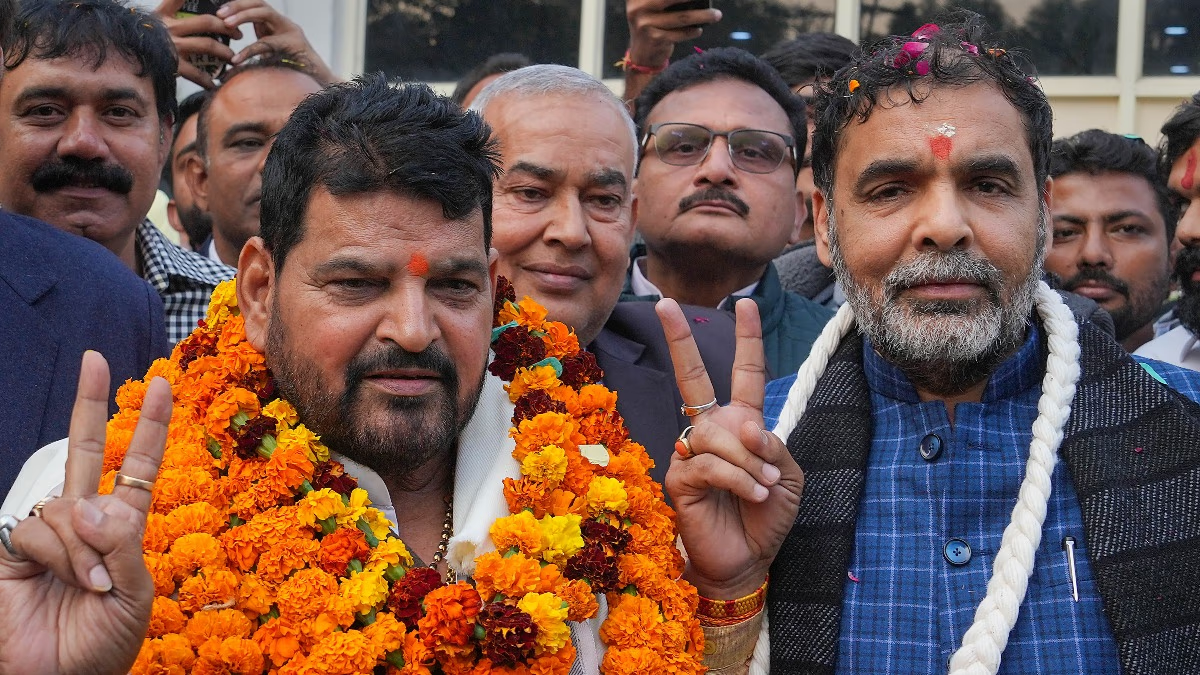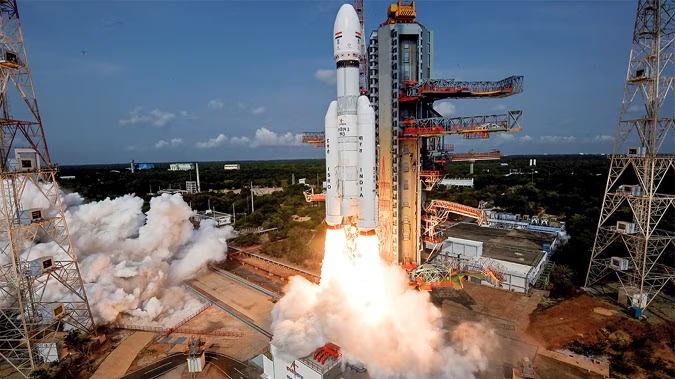Starting Friday, October 25, the armed forces of India and China have begun their retreat from the eastern Ladakh frontier. In regions of Demchok and Depsang, temporary military tents and shelters have been dismantled and the relocation of vehicles and equipment is underway.
With the announcement of a new patrolling agreement with China, satellite images available to us confirm the initiation of ground disengagement at Depsang and Demchok. Recent images taken Friday reveal significant reductions in structures, indicating a possible end to the prolonged Himalayan standoff before the harsh winter sets in.
However, some Chinese military establishments still remain, highlighting the construction activities during the standoff. Both sides are optimistic that the disengagement will conclude within the next few days. Satellite images provided by Maxar Technologies in the United States show temporary structures being dismantled in recent days.
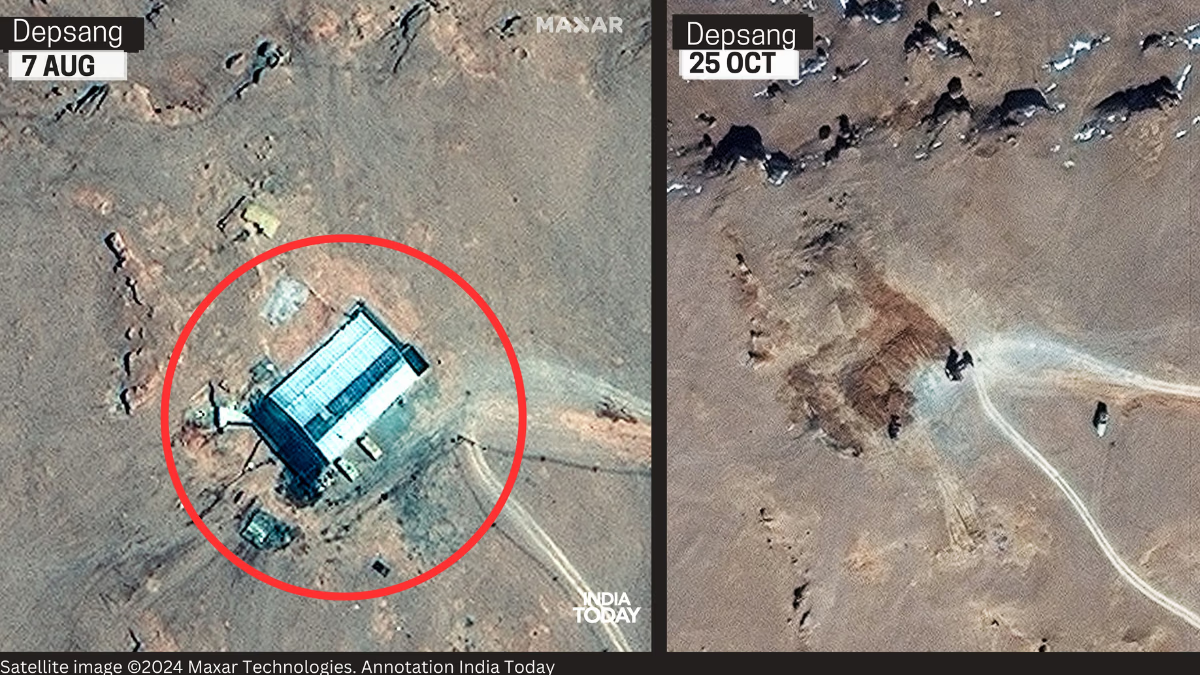
Source: aajtak
One of the most significant confirmations of the disengagement process is a photograph from near Patrol Point 10 in the Depsang area, where temporary constructions erected during the standoff have been removed. Earlier images from August 7 displayed a sizable structure there, but Friday's images depict a flattened terrain.
In a southern section of Demchok, a comparison of images from October 9 and October 25 shows the removal of permanent structures, in line with the disengagement announcement.
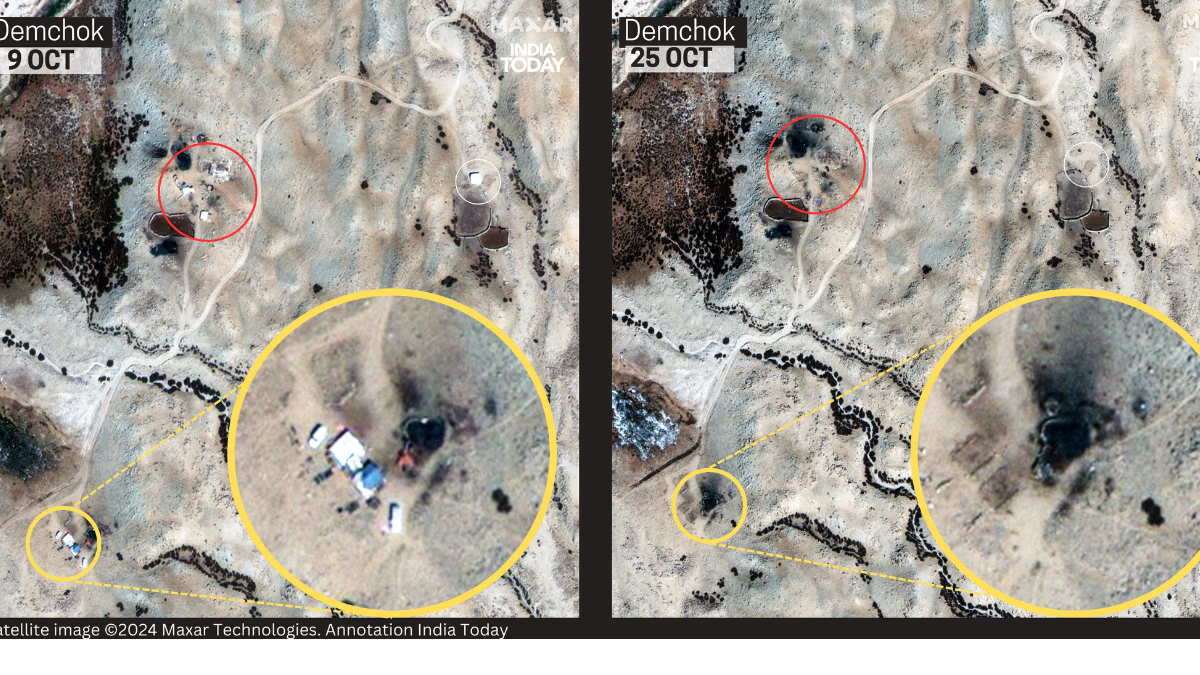
Source: aajtak
Similarly, images taken Friday from another part of Depsang reveal most temporary structures, including large transport vehicles, have been removed from a military outpost.
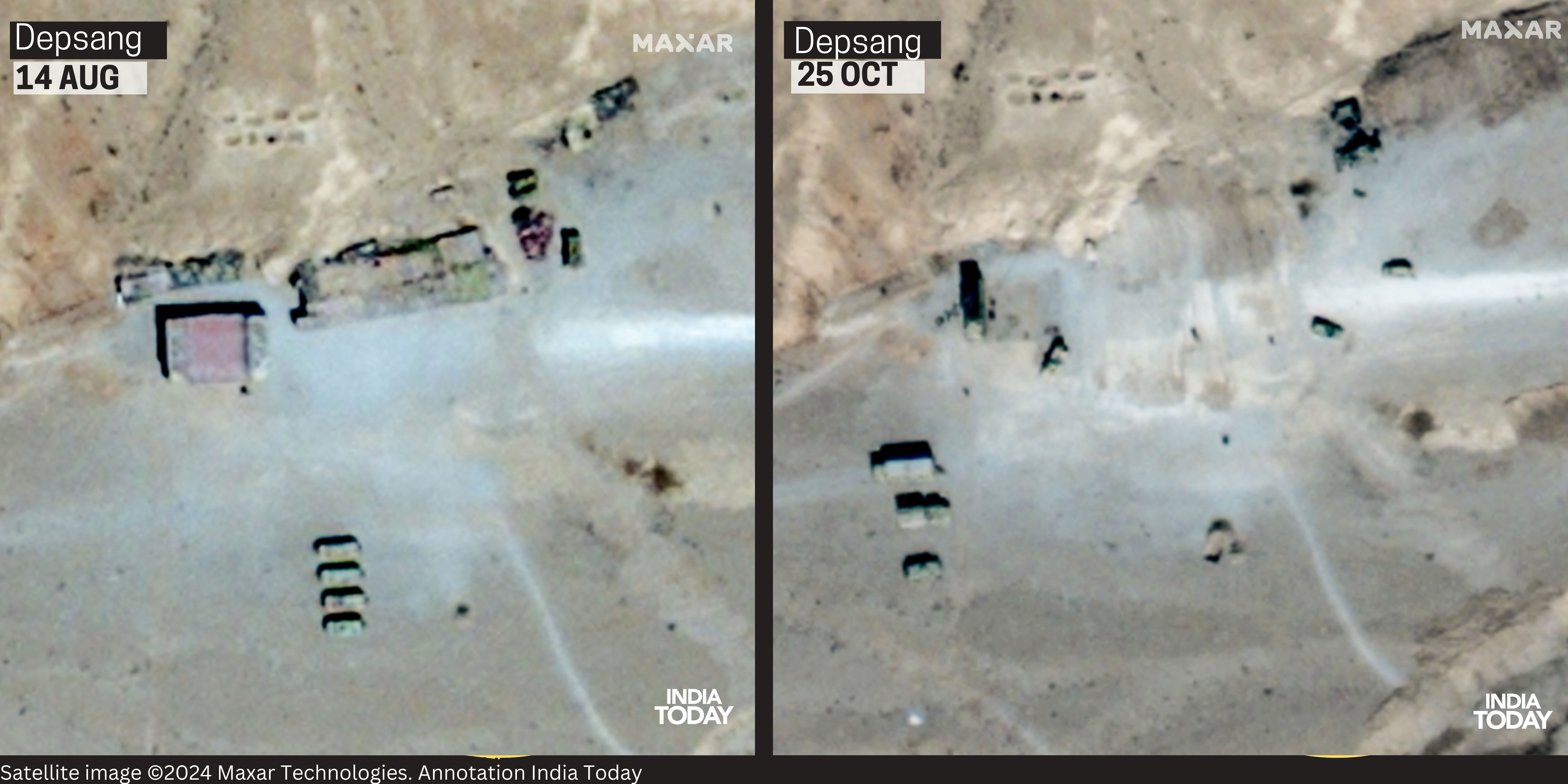
Source: aajtak
Indian Prime Minister Narendra Modi and Chinese President Xi Jinping discussed these developments during the BRICS summit in Russia, marking their first bilateral meeting since 2019.
The standoff commenced in May 2020, escalating into violent clashes in June at Galwan resulting in casualties on both sides. Since then, military dialogues have led to redeployment, partial withdrawal, and creation of buffer zones at Galwan, Pangong Tso, and Gogra-Hot Springs. While these disengagements have stabilized tensions, patrols in newly formed buffer zones have been limited. Experts argue such buffer zones could bolster Chinese claims in the long run.
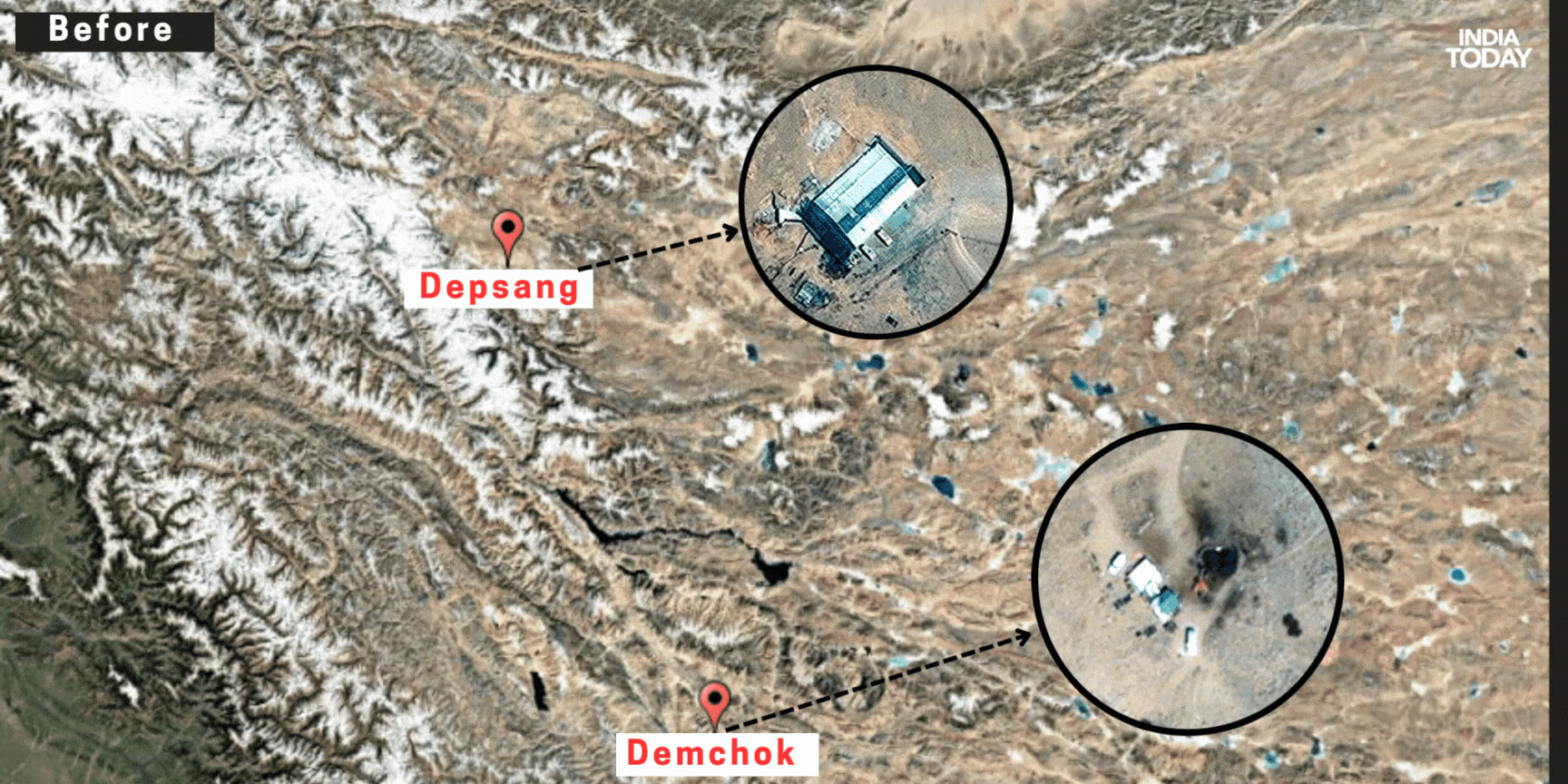
Source: aajtak
(Caption: Image: Google Earth, Landsat/Copernicus, Inset satellite image ©2024 Maxar Technologies, India Today)
Until recently, Depsang and Demchok remained unresolved areas. While details of the latest agreement are limited, officials confirm it pertains specifically to remaining areas, notably Depsang and Demchok. Foreign Secretary Vikram Misri stated on Tuesday the patrols and shepherding activities will revert to pre-2020 conditions in these regions.
Information regarding the retreat from Depsang and Demchok surfaced on October 18, stating both forces will revert to their positions before April 2020. They will patrol in the zones they were accustomed to pre-April 2020. Additionally, commander-level meetings will continue; the tensions in Depsang and Demchok have persisted since the Galwan clashes between Indian and Chinese forces in 2020.
